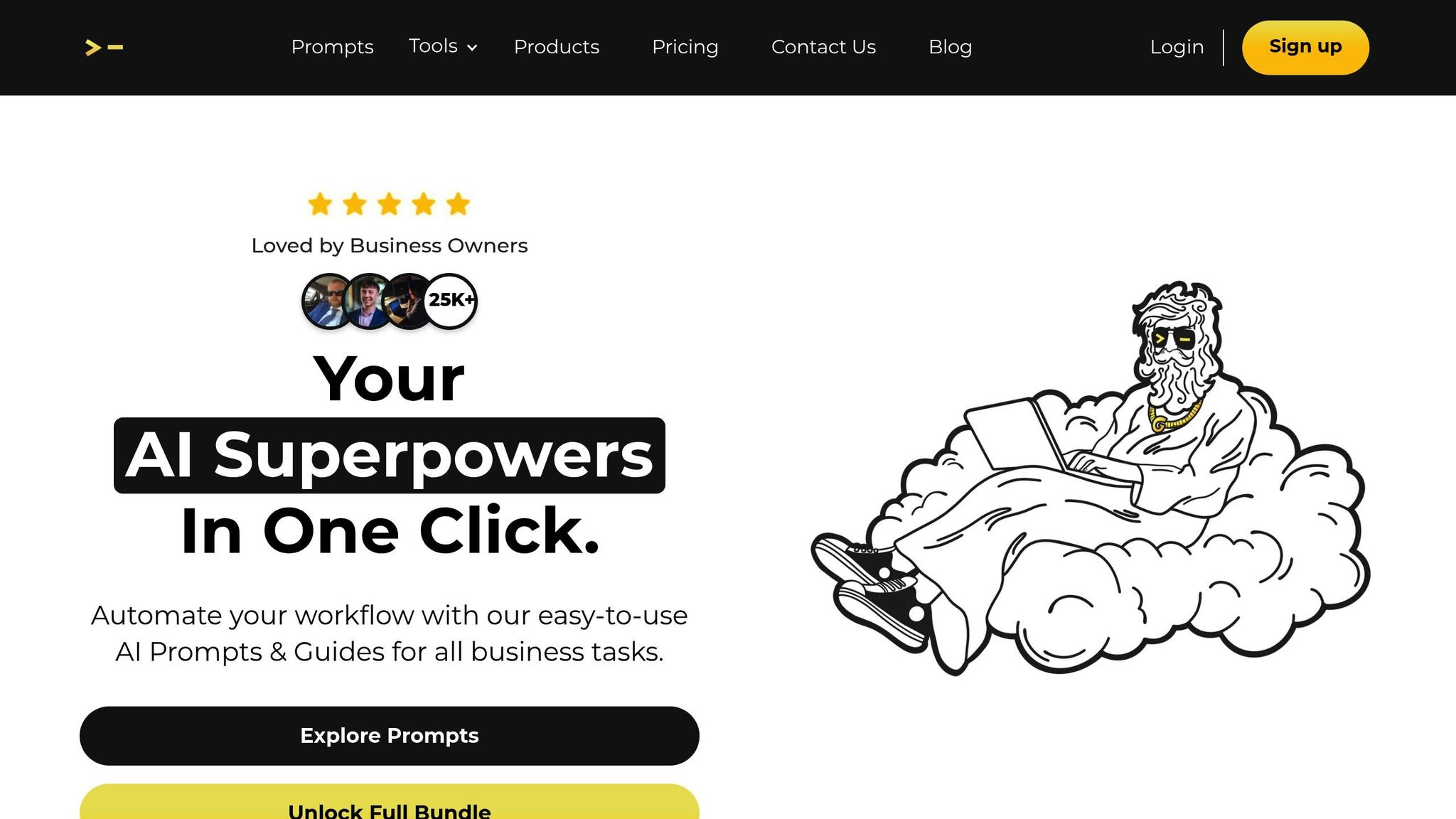
AI agents are changing how students learn by offering tailored education experiences. These tools help teachers manage large classrooms, provide quick feedback, and recommend learning materials suited to each student’s needs. From improving math skills with visual aids to predicting learning gaps, AI agents are bridging gaps in education.
Key points:
Challenges include data privacy concerns, bias in algorithms, tech access disparities, and high implementation costs. While AI can’t replace teachers, it’s a powerful tool to support personalized learning when used thoughtfully.
Personalized learning in American schools faces a tough road due to the persistence of traditional teaching methods and the limited ability of institutions to provide tailored support. From overcrowded classrooms to insufficient funding, these hurdles highlight the pressing need for solutions, including AI-driven tools, to make personalized instruction more accessible.
One of the biggest hurdles in personalized learning is the sheer scale of classrooms and the limited resources available. Picture this: a single teacher managing a classroom of 28–30 students, all with unique learning needs. It’s nearly impossible to provide tailored attention to each student in such a setting.
Then there’s the money problem. Many schools still use outdated funding systems that distribute resources based on enrollment numbers alone. This method fails to account for the extra costs needed to adopt personalized learning tools or train educators to use them effectively.
On top of that, teachers are stretched thin. They often don’t have the time or capacity to create customized materials for different learning styles or to collaborate on personalized strategies. The ongoing teacher shortage only adds to the strain, pushing schools to rely more heavily on technology. While helpful, tech solutions can’t replace the human connection and guidance that students need.
Technology itself presents another set of challenges. Interactive platforms require hefty initial investments, ongoing technical support, and constant updates to deliver personalized content effectively.
Another issue is the digital divide. Many students arrive in classrooms without prior experience using digital tools, creating gaps in access and literacy that can widen educational inequities. Teachers also face the tricky task of integrating personalized learning methods with rigid curricula and tight class schedules. Add to that the difficulty of securing support from district leaders, and it becomes clear why many educators struggle to get the funding, materials, and flexibility they need.
AI agents are addressing the challenges of limited resources and the need for scalability in American classrooms. With teachers often managing classrooms of 30 or more students, these tools provide the kind of individualized attention that would otherwise be impossible. Here's a closer look at how AI agents are reshaping education.
AI agents are transforming learning by creating tailored educational experiences. By analyzing individual learning habits - such as quiz scores, time spent on different topics, and learning speeds - they adjust the curriculum to fit each student's unique needs.
For example, if a student struggles with fractions but learns better through visual aids, the AI might suggest interactive games instead of traditional text problems. On the other hand, a student who quickly grasps basic concepts but struggles with word problems might be offered more advanced material alongside additional resources to improve reading comprehension. This kind of adaptability aligns with the growing emphasis on personalized education in the U.S.
These systems also predict what a student should tackle next. Instead of following a rigid curriculum, they determine whether a student is ready to move forward or needs to revisit earlier lessons. This flexibility helps address the one-size-fits-all challenge of traditional classrooms, ensuring that students remain engaged and appropriately challenged.
Much like how streaming platforms recommend shows or movies, AI agents suggest practice problems, videos, and activities that align with each student's learning style and pace.
AI-powered tutoring systems, driven by natural language processing, engage students in ways that go beyond grading answers. These tools explain concepts, guide problem-solving, and act much like a human tutor.
One of the most impactful features is instant feedback. Instead of waiting days for a teacher to review assignments, students receive immediate responses. For instance, if a student makes a mistake on a math problem, the AI can pinpoint the error, explain why it happened, and guide the student toward the correct solution.
Available 24/7, these AI tutors extend learning beyond school hours and can assist multiple students at once - something that would be challenging for a single educator. By retaining a record of each student's learning history, the system can build on past interactions to provide even more tailored guidance.
For students who may feel hesitant to ask questions in class, AI tutors offer a judgment-free space for inquiry. They can adjust their tone and approach based on the student's needs - offering encouragement to those who lack confidence, detailed explanations for those needing extra help, or advanced challenges for students ready to push their limits.
AI agents don't just address current learning needs - they also anticipate future challenges. Using predictive modeling, these systems analyze patterns in assignments, quizzes, engagement levels, and response times to identify students who might be at risk of falling behind.
For instance, if a student starts taking longer to solve math problems or makes an increasing number of careless errors, the system can flag these issues for teachers. This allows educators to intervene early, whether by reinforcing foundational skills, addressing gaps in prior knowledge, or adjusting teaching strategies.
Beyond individual students, predictive analytics also help schools and districts allocate resources more effectively. Administrators can pinpoint topics that consistently challenge students, evaluate teaching methods, and identify areas where additional support or training might be needed. As the system learns from its predictions and outcomes, it becomes even better at providing timely, accurate insights. This ensures that interventions are not only effective but also highly targeted to each student's needs.
Educators often face technical challenges when trying to integrate AI systems into their classrooms. Thankfully, there are now specialized tools and platforms designed to make this process more approachable and effective. These resources help bridge the gap, enabling educators to adopt AI solutions with greater confidence and ease.

One of the biggest challenges in using AI is figuring out how to communicate with these systems effectively. That’s where God of Prompt steps in. This platform offers a collection of over 30,000 ready-made AI prompts and guides, tailored for popular platforms like ChatGPT, Claude, Midjourney, and Gemini AI.
Instead of spending months experimenting and learning through trial and error, educators can jump straight into using pre-tested prompts. These prompts are categorized and refined to help teachers frame questions, design lesson plans, and create interactive learning scenarios. By removing the guesswork, God of Prompt allows educators to focus on achieving meaningful results with AI tools.
Affordable and practical, God of Prompt provides tools that meet the diverse needs of educators. Here’s a closer look at their offerings:
To make adoption risk-free, God of Prompt offers a 7-day money-back guarantee, which is especially helpful for schools operating on tight budgets.
God of Prompt’s resources tackle both the technical and instructional challenges of modern classrooms. For instance, teachers can use the ready-made templates to create personalized lesson materials or to provide AI-driven tutoring with a professional and engaging tone.
For school administrators managing AI adoption across multiple classrooms, the platform’s categorized prompts allow for consistent implementation while still offering flexibility for individual teachers. Teams can share successful strategies, build a repository of effective prompts, and maintain a high standard of quality across the board.
Beyond lesson planning, the platform also supports administrative tasks. Educators can use productivity-focused prompts to generate progress reports, draft communication materials for parents, and streamline other time-consuming tasks. This frees up more time for teachers to focus on their students, without sacrificing the personal connection that’s essential in education.
Most importantly, God of Prompt ensures that AI outputs align with educational goals. Teachers can rely on proven prompts to guide AI systems toward specific objectives, ensuring that technology enhances learning rather than dictating it. This approach keeps the focus where it belongs - on achieving meaningful educational outcomes.
AI agents are reshaping the education landscape, offering both advantages and challenges. By understanding these trade-offs, educators can better decide how to integrate AI into their teaching strategies.
Scalability and efficiency are among the standout advantages of AI agents. These systems can support thousands of students simultaneously without a corresponding increase in costs. Tasks like grading, attendance tracking, and progress monitoring - often time-consuming for educators - can now be automated. This lets teachers spend more time on what truly matters: teaching and engaging with students.
Real-time adaptability is a game changer compared to traditional teaching methods. AI agents continuously analyze student performance and adjust content, pacing, and teaching methods on the fly. For instance, if a student is struggling with a concept, the AI can immediately offer extra practice, visual aids, or alternative explanations - no need to wait for the next class session or the teacher's availability.
Enhanced engagement is another major benefit. AI tools personalize learning by tailoring content to a student’s skill level, ensuring that lessons are neither too easy nor too difficult. This keeps students motivated and interested in their studies. According to the Digital Education Council, 86% of students report using AI in their studies, with 24% using it daily and 54% weekly. These numbers highlight how much students value AI tools for their learning experiences.
AI also provides better support for struggling students by automating administrative tasks and delivering clear, data-driven insights. Educators can use this information to step in early and provide targeted interventions.
Expanded access to quality education is perhaps one of the most transformative aspects. AI-powered platforms break down barriers by reaching students in remote areas, supporting learners with disabilities through features like speech recognition and real-time translation, and offering 24/7 availability to fit different schedules. These advancements make education more inclusive and adaptable to diverse needs.
However, these benefits come with challenges that educators must consider.
Data privacy and security concerns are a significant hurdle. AI systems require large amounts of student data, which raises questions about how this information is collected, stored, and used. Schools must ensure compliance with regulations and protect sensitive data from breaches, which can be a daunting task.
Algorithmic bias is another critical issue. If AI systems are trained on biased datasets, they can unintentionally reinforce inequalities. This could show up in how content is recommended, assessments are scored, or learning paths are assigned, potentially disadvantaging certain student groups.
Technology access disparities highlight another challenge. Not all students have access to reliable internet, modern devices, or technical support at home. This "digital divide" can widen existing achievement gaps rather than narrowing them.
Over-reliance on technology is a risk that educators must navigate carefully. While AI excels at delivering information and tracking progress, it lacks the emotional intelligence and creativity that human teachers bring to the table. Too much dependence on AI could lead to a loss of the human connection essential for social and emotional development.
Implementation costs and complexity also pose barriers. Beyond purchasing software, schools need to invest in staff training, infrastructure upgrades, and ongoing maintenance. For smaller or underfunded schools, these costs may be prohibitive.
| Aspect | Benefits | Drawbacks |
|---|---|---|
| Scalability | Supports thousands of students simultaneously without proportional costs | High initial implementation costs and infrastructure requirements |
| Personalization | Adapts in real-time to individual learning needs and preferences | Risk of algorithmic bias affecting content delivery and assessments |
| Efficiency | Automates administrative tasks, freeing educators for teaching | Potential over-reliance on AI, reducing essential human interaction |
| Data Insights | Provides analytics for informed decision-making | Raises privacy concerns and requires robust data security measures |
| Accessibility | Offers 24/7 availability and supports diverse learning needs | Technology access disparities can deepen educational inequalities |
| Engagement | Delivers interactive and tailored experiences to maintain interest | Lacks the emotional and inspirational qualities of human teachers |
AI agents are stepping up to tackle long-standing challenges in traditional education, offering solutions that make learning more personalized and accessible for students across the U.S. By leveraging these tools, schools can provide dynamic, tailored instruction that meets individual needs, all while addressing systemic issues like resource disparities and educational inequality.
AI agents are reshaping education by breaking down traditional barriers. They enable individualized instruction on a large scale, unify fragmented systems, and adapt content to suit diverse learners. This evolution is especially critical in the U.S., where student populations vary widely in both background and access to resources.
What used to be considered a luxury - personalized learning - is quickly becoming the new norm. AI offers students tailored lessons and real-time feedback, enhancing engagement and outcomes. That said, rolling out these technologies successfully requires careful planning. Schools must weigh the benefits, such as improved student performance, against key concerns like data privacy, algorithmic fairness, and preserving the essential human connection in education.
With these considerations in mind, educators are better equipped to begin reimagining their classrooms.
Start small when introducing AI-driven tools into your teaching environment. Focus on areas where AI can make an immediate difference, like automating grading, tracking student progress, or recommending content that aligns with individual learning goals.
To ease the transition, use reliable resources for guidance. Platforms like God of Prompt offer curated AI prompts that can help educators integrate these tools effectively, addressing scalability and resource limitations highlighted throughout this discussion. By taking these steps, schools can begin unlocking the full potential of AI in education.
AI-driven learning tools prioritize student privacy by implementing strong data protection strategies. These systems adhere to privacy regulations such as GDPR and U.S. laws, using methods like encryption, access controls, and data anonymization to keep student information secure from unauthorized access.
Moreover, these tools are built with a privacy-first mindset. They feature regularly updated policies and work closely with educators and stakeholders to maintain a balance between delivering personalized learning experiences and upholding stringent data security measures. This approach allows students to benefit from customized education while ensuring their personal information stays protected.
Schools can bridge the digital divide by making sure every student has access to reliable internet and essential devices, particularly in underserved areas. By providing these tools, schools can help level the playing field, allowing all students to benefit from AI-powered learning tools.
In addition, introducing free or low-cost digital literacy programs and AI-based educational resources can equip both students and teachers with the skills they need to make the most of these technologies. Prioritizing accessibility and skill development ensures that AI-driven personalized learning becomes available to everyone.
Educators can strike a balance between leveraging AI tools and nurturing strong human connections by treating AI as a helpful assistant rather than a substitute. For instance, AI can take care of time-consuming tasks like grading or suggesting personalized learning materials. This frees up teachers to dedicate more time to meaningful one-on-one interactions and providing emotional support to their students.
By using AI-generated insights, teachers can gain a deeper understanding of each student's unique needs and adjust their teaching methods to suit those requirements. However, the heart of education lies in empathy, active listening, and face-to-face interaction. When these human elements take priority, technology becomes a tool to enhance - not replace - the personal connections essential to a rich learning experience.





